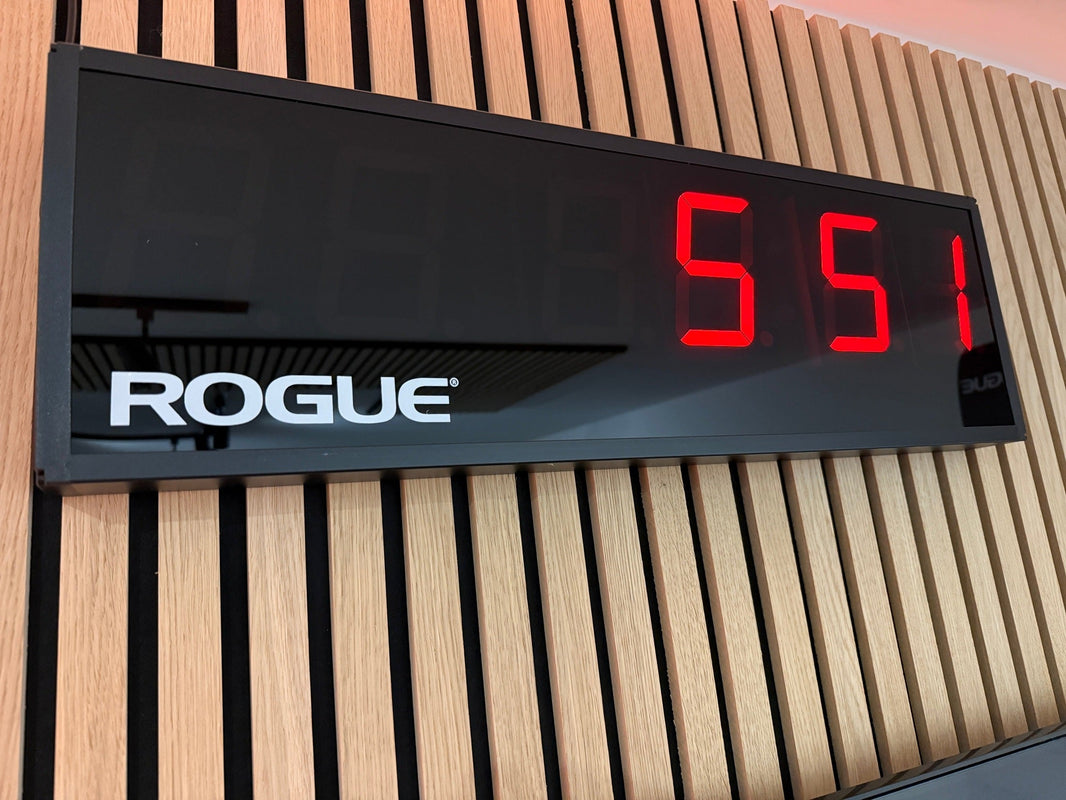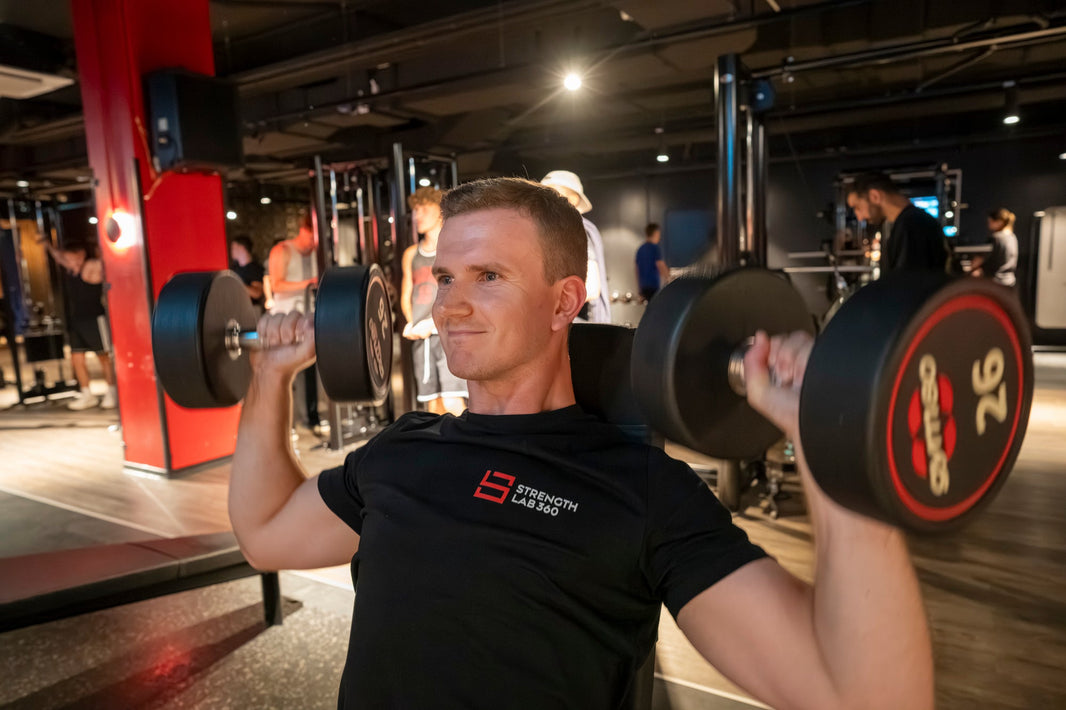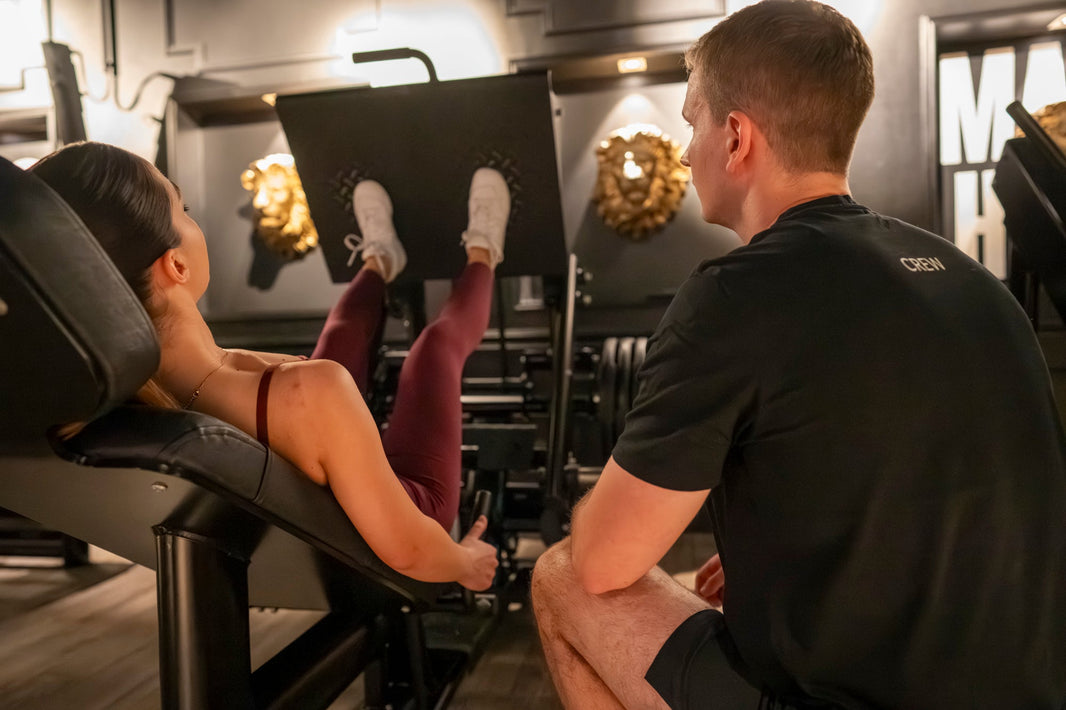Achieving broader, stronger shoulders is a common goal for fitness enthusiasts, and understanding the role of all three parts of the deltoid muscle is crucial in this pursuit. This guide explores the best anterior, lateral and posterior delt exercises designed for hypertrophy, helping you enhance your shoulder workouts effectively. By focusing on all three parts of the deltoid muscles, you can not only improve aesthetics but also boost overall upper body strength and performance.
Understanding Anterior, Posterior and Side Delts
What are the parts of the deltoid muscles?
The deltoid muscles, known as delts, are essential for shoulder mobility and strength and consist of three distinct heads: anterior, lateral, and posterior. The lateral deltoids, side delts, are located on the sides of the shoulders and play a role in shoulder abduction. This movement allows the arm to move away from the body, contributing significantly to the overall shape of the shoulders. Developing the side delts not only enhances aesthetics by creating the appearance of broader, more balanced shoulders, but also contributes to improved performance in a wide range of upper body movements. A well-developed lateral delt is often associated with strength and athleticism, making it a critical focus in any effective shoulder training program. The anterior deltoid, front delts, are located on the front of the shoulder, they assist with shoulder flexion and internal rotation. The posterior deltoid, rear delts, are located on the back of the shoulder. They are responsible for shoulder extension, external rotation, and horizontal abduction.

The Importance of Hypertrophy in Shoulder Training
Hypertrophy, which refers to the increase in muscle size, is a primary objective for many individuals engaging in resistance training. In shoulder training, focusing on hypertrophy is crucial for achieving a balanced and well-defined upper body. Hypertrophy training not only fosters muscle growth but also improves strength and stability, which is essential for executing compound exercises effectively. To maximize hypertrophy, it's important to integrate both compound and isolation exercises that specifically target each part of the delts within your training program.
Benefits of Targeting the Deltoid Muscles
Focusing on the delts offers a number of benefits, including improved shoulder aesthetics, enhanced upper body strength, and better performance in athletic activities. Well-developed side delts create the illusion of a slimmer waist by broadening the shoulders, a desirable trait for both men and women. Additionally, a strong focus on delt training can contribute to overall shoulder stability, reducing the risk of shoulder impingement during other upper body exercises. Engaging in targeted delt workouts can also enhance the mind-muscle connection, which leads to more effective workouts and improved muscle activation, ultimately helping you gain mass and achieve bigger shoulders.
Top 10 Best Delt Exercises
While every individual has unique preferences and specific needs when it comes to selecting the "best" exercises, some movements consistently stand out. These exercises have been proven to deliver exceptional results in building and strengthening the delts. Here are our top 10 picks!
1. Military Press
The barbell military press, a compound movement, primarily engages the anterior deltoid for shoulder flexion, driving the bar upward, while the lateral deltoid assists in arm abduction, contributing to overall stability and lift power. The posterior deltoid acts as a stabilizer, helping maintain proper shoulder alignment and control throughout the movement. Moreover, the triceps is also trained when exercising the military press.
2. Dumbbell Seated Press
During seated dumbbell presses, the anterior deltoids drive the pressing motion, the lateral deltoids contribute to arm abduction, and the posterior deltoids stabilize the shoulder joint for controlled movement. Unlike standing military presses, the seated position removes the need for core and lower-body stabilization, allowing for greater focus on the shoulders and minimizing energy leakage. Additionally, the use of dumbbells enables a greater range of motion and independent arm movement, which can help address muscle imbalances and improve shoulder mobility.
3. Machine shoulder press
In machine shoulder presses, the anterior deltoids generate the primary force to push the weight, while the lateral deltoids assist in lifting the arms. Unlike seated dumbbell presses, the machine provides a fixed path of motion, reducing the need for stabilizing muscles and making the exercise more accessible for beginners or those focusing on isolated shoulder strength. The controlled movement also minimizes the risk of form breakdown, allowing for consistent muscle activation without concerns about balance or coordination.
4. Front cable raises
Cable front raises isolate the anterior deltoids, emphasizing shoulder flexion by lifting the arm forward against resistance. Since compound pressing exercises already heavily recruit the front delts, additional isolation work for this area is generally less critical. If prioritization is needed, we recommend focusing on isolating the lateral and posterior deltoids, as they are often undertrained compared to the front delts. However, cable front raises can still be a valuable accessory movement for enhancing strength, endurance, and definition, with the cable providing constant tension for optimal muscle activation.
5. Dumbbell lateral raise
Dumbbell lateral raises isolate the lateral deltoids, focusing on shoulder abduction as the arms are raised out to the sides. The slight bend in the elbows helps maintain tension on the delts while reducing strain on the joints. This exercise is key for developing shoulder width and creating a balanced, capped look, especially when performed with controlled movements to minimize momentum. As a staple for side delt hypertrophy, it complements compound pressing exercises by addressing a commonly underdeveloped area of the shoulders.
6. Cable lateral raise
Cable lateral raises target the lateral deltoids, focusing on shoulder abduction as the arm is lifted out to the side. The cable provides continuous tension, ensuring that the side delts are activated throughout the entire movement. This exercise offers a more controlled motion compared to dumbbell lateral raises, which helps maintain consistent muscle engagement and reduces the risk of using momentum. It is an effective way to build shoulder width and definition while enhancing hypertrophy in the lateral deltoids.
7. Upright rows
Upright rows, whether performed with a barbell or dumbbells, target the traps and lateral deltoids, focusing on shoulder elevation as the arms are pulled upward. The movement activates the delts and traps while promoting upper body strength and definition. This exercise helps develop the shoulder and upper back, enhancing posture and creating a fuller shoulder appearance. It's essential to perform upright rows with control, avoiding excessive jerking or pulling to ensure safe and effective muscle activation.
8. Reverse Dumbbell Flys
Dumbbell reverse flys isolate the posterior deltoids by focusing on horizontal shoulder abduction as the arms are raised outward. With a slight bend in the elbows, this movement targets the rear delts while also engaging the upper back for stability. It's essential to control the lift and avoid using momentum to ensure maximum muscle activation, helping to develop shoulder stability, posture, and balance in shoulder development.
9. Reverse Cable Flys
Cable reverse flys target the posterior deltoids by maintaining consistent tension throughout the entire range of motion, as the cables are pulled outward. Unlike dumbbell reverse flys, where resistance can decrease at certain points of the lift due to gravity, the cables provide continuous resistance, ensuring the rear delts are constantly engaged. Additionally, cable reverse flys allow for more adjustable positioning and can better control the movement path, minimizing the risk of using momentum, while dumbbells may lead to more variation in form and less stability in the shoulders. This makes cable reverse flys a more controlled and focused exercise for the rear delts.
10. Reverse Machine Flys
Reverse flys on the machine isolate the posterior deltoids. The machine provides controlled resistance, allowing for consistent engagement of the rear delts throughout the entire movement. This exercise effectively targets the back of the shoulders and upper back, improving shoulder stability and posture while enhancing the overall balance of shoulder development. Maintaining proper form and a controlled tempo is key to fully activating the posterior delts and minimizing the risk of injury.
Incorporating Delt Exercises into Your Workout Routine
Creating a Balanced Shoulder Workout with the best exercises
To create a truly balanced shoulder workout, it is essential to incorporate a variety of exercises that target all three heads of the deltoid muscles. This includes not only compound movements, such as the overhead presses but also isolation exercises like reverse flys and face pulls. By ensuring that all three parts of the delts are adequately stimulated, you promote overall muscle growth and aesthetics. Varying angles and grips during your shoulder exercises can further enhance muscle activation and prevent stagnation in your training program.
Frequency and Volume for Optimal Gains
For optimal hypertrophy, it is advisable to engage in delt training 2-3 times per week. This frequency allows for sufficient recovery, which is critical for muscle growth. Adjusting your training volume based on personal recovery capabilities and experience level is crucial; generally, performing 10-24 sets per week can yield significant results. By closely monitoring your progress and making adjustments, you can maximize gains and minimize the risk of overtraining while working on your shoulders.
Tips for Maximizing Hypertrophy in Side Delt Training
Proper Form and Technique for your delt workout
Maintaining proper form and technique during exercises is paramount for maximizing hypertrophy while minimizing injury risks. Focus on executing controlled movements, avoid excessive swinging or reliance on momentum when lifting. Engaging the targeted muscles through the entire range of motion is crucial for effective training. Utilizing lighter weights initially can help prioritize form and enhance muscle activation, particularly for isolation exercises like lateral raises, ultimately leading to more significant muscle growth over time.
Using Progressive Overload to train delts
Progressive overload is a fundamental principle in achieving hypertrophy for all muscle groups, including the delts. To implement this strategy, gradually increase the weight lifted, the number of repetitions, or the number of sets. By continually challenging your muscles, you promote growth and strength gains. Keep a detailed record of your workouts and make incremental adjustments to ensure consistent progress, which can help you break through plateaus in your delt training and achieve bigger shoulders.
Rest and Recovery Strategies
Rest and recovery are vital components of any effective training program. Allowing adequate time for recovery between sessions is crucial for muscle growth and preventing overtraining. Incorporating rest days into your training schedule, prioritizing quality sleep, and ensuring proper nutrition can significantly enhance recovery. Additionally, employing strategies like active recovery can alleviate muscle soreness, improving overall performance in subsequent shoulder workouts and facilitating muscle growth.
Common Mistakes to Avoid in Shoulder Workouts
Neglecting Warm-Up and Mobility
Neglecting a proper warm-up can lead to injuries and hinder performance. A solid warm-up should always begin with the first exercise of the training day performed at a reduced weight—typically around 50% of your working weight—to gradually prepare the muscles and joints for the upcoming load. Additional warm-up elements can include dynamic stretches and mobility work targeting the shoulder joint and surrounding muscles. This combination enhances blood flow, improves range of motion, and helps prevent stiffness, ultimately leading to more effective and safer training sessions. Starting your workout this way ensures you're fully primed to get the most out of your delt exercises.
Using Excessive Weight
Using excessive weight during any exercise can lead to poor form and increase the risk of injury. While it’s important to challenge your muscles, prioritizing proper technique over simply lifting heavy is key. Focus on controlled movements, especially during the eccentric (lowering) phase—we recommend a slow, deliberate tempo to maximize tension on the muscle and improve overall effectiveness. Gradually increase weight as your strength and control improve. This approach not only enhances the results of your side delt training but also supports long-term muscle growth while keeping safety a priority.
Ignoring Mind-Muscle Connection
Ignoring the mind-muscle connection during shoulder exercises can limit muscle activation and growth. The mind-muscle connection refers to the ability to consciously engage and feel the targeted muscle working during an exercise. Focusing on this connection can enhance muscle activation and improve the effectiveness of each rep. Incorporating techniques such as visualization and slow, controlled movements can help reinforce the mind-muscle connection, leading to better hypertrophy outcomes.
Conclusion: Building Wide Shoulders with Effective Delt Exercises
Recap of Best Delt Exercises
In summary, incorporating a variety of effective anterior, posterior and side delt exercises is essential for achieving hypertrophy and building wider shoulders. Key exercises include dumbbell lateral raises, cable reverse flys, overhead presses, and front raises, among others. Each exercise targets the delts in different ways, promoting balanced development and strength. By focusing on proper form, utilizing progressive overload, and maintaining a consistent training routine, individuals can maximize their delt growth and enhance their overall shoulder aesthetics. This strategic approach ensures that your efforts yield significant results in muscle growth.
Long-Term Strategies for Shoulder Development
Long-term strategies for shoulder development should include a well-structured training program that emphasizes consistency, variety, and progressive overload. Regularly incorporating different exercises and training modalities can prevent plateaus and stimulate muscle growth. The StrengthLab360 app is designed to help guide progressive overload by automatically adjusting loads based on your performance, ensuring continuous and effective progression over time. Additionally, monitoring recovery and adjusting training volume based on individual responses can optimize results. Focusing on both strength and hypertrophy in the delts and surrounding muscle groups will contribute to a well-rounded and aesthetically pleasing upper body.
Encouragement to Start Training Shoulders, especially with Side Delt Exercises
For those looking to enhance their shoulder development, starting a dedicated delt training program can yield significant benefits in both aesthetics and performance. By training all three parts of the delts and incorporating effective training strategies, individuals can achieve broader, stronger shoulders that complement their overall physique. Embrace the journey of shoulder training, stay consistent, and enjoy the process of building bigger, more defined shoulders. Remember, the path to achieving your fitness goals is built on dedication and persistence.







